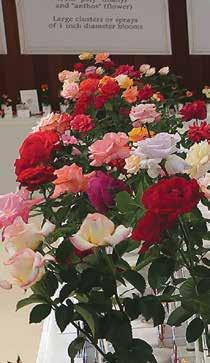Ask the Experts IT IS GOOD TIME TO TREAT BAGWORMS Question: Last summer bagworms got the best of me. I did not notice them until large areas of my arborvitae turned brown. How can I stay on top of them this summer? Answer: Good timing with this question. Bagworms can feed on over a 100 different plant species. Their favorite is evergreens, junipers, spruce, and arborvitae to name a few. Bagworms are best controlled after they hatch and emerge from the bags overwintering on plants. They also move from plant to plant on fine silky threads which transport them on the wind. Bagworms hatch in early to mid-June in the Kansas City area. When they hatch they are small, maybe the size of a sharpened pencil point, slowly growing into the two-inch noticeable bag or cocoon structure. The smaller the size the easier to treat. Two treatments a couple weeks apart in June should control the outbreak. Good coverage is a must as the insecticides work by contact. At this time of year just about any insecticide labeled for bagworms is highly effective. SHRUB RECOMMENDATIONS FOR SHADE Question: I am looking for a shrub recommendation for shade. It is under a large tree and receives very little light. I would like something that flowers. Answer: Shade tolerant shrubs are few and far between, especially ones that flower. Flowering plants require brighter light to develop flower buds. The denser the shade the less options you will have for shade shrubs. Here is a short list to consider. Evergreens to consider would be yew, boxwood, holly, azalea, and rhododendron. Keep in mind low light plants are usually less dense with foliage, and flowers are fewer due to lack of sunlight. Shade can also be dry and many of the ever-
ceed depends on your perception of the plant as a weed or pollinator friendly plant.
Bagworm on arborvitae
One of the best shrubs for shade is Kerria.
Wild violets are a host plant for the fritillary butterfly.
greens would do best with even moisture. One of the best shrubs for shade is Kerria, Kerria japonica. Kerria reaches 4 to 6 feet tall and has sunny yellow flowers in the spring. It does slowly spread and has bright green stems in the winter. This might be your best bet for a shade tolerant shrub with lower maintenance.
to eradicate. Wild violets are stubborn and have a will to survive. It will be an ongoing battle to keep them in check. Violets reseed freely and do best in shady areas where the lawn struggles. Herbicides containing triclopyr would be recommended in the spring and fall. Your other option is to embrace violets. They can be a problem solver. They thrive in shady areas where the lawn thins. Consider them a ground cover and enjoy the pretty blue/purple flowers. Another bonus is violets are a host for the fritillary butterfly. The pollen is an important food source of bees and native pollinators. How you pro-
WILD VIOLETS CAN BE A PROBLEM SOLVER Question: Wild violets are taking over a shady area in my lawn. What can I do? Answer: You have a couple of options. One is to treat and attempt
DENNIS PATTON Horticulture Agent 6
June 2022 | kcgmag.com
LEFT WITH PILE OF CHIPS AFTER STUMP GRINDING Question: I had a tree removed and the stump ground out. What do I do with the mass of wood chips and dirt? Can I plant grass seed in this mixture? Answer: Tree stump grinding results in a pile of chips and soil. It is ideal to remove as much of this mixture as possible. Over time the wood will rot and decay resulting in a depression from settling. If you Remove the chip mixture and add soil to level the area, it allows for a more rapid repair. It might be best to create a slight mound with new soil to compensate for the decay and settling. Leaving the wood chips will make establishing grass difficult as the wood mixture dries out rapidly and its breakdown will rob nutrients needed for plant growth. BEST LOCATION FOR PLANTING A TREE Question: Can I plant a tree in the same location where a tree has been removed and the stump ground out? Answer: Can you and should you are two different questions. You could but it is not highly recommended. Utilizing the same planting hole is difficult as not all the old roots are removed, making digging the planting hole challenging. The remaining wood will decay and robs needed nutrients from the new plant. If you do use the same location, first remove as much of the wood debris as possible and bring in new soil to level. The best solution would be to plant the new tree in an area away from the removed stump. This will make digging the hole easier and avoids the issue of decaying wood affecting new growth. How far away? The further the better but it will depend on other factors.
Dennis Patton is the horticulture agent for Johnson County K-State Research and Extension. For free information fact sheets, visit www.johnson.ksu.edu, or call the Extension office at 913-715-7000.













